Absolutely it is. Gerbils belong to the same giant family (well Order) as hamsters, mice, squirrels, beavers and even giant capybara – however, they are not that closely related to get excited about.
Rodents are so named from the Latin word ‘to gnaw’ which gerbils do very well indeed. Who hasn’t had their gerbils gnaw through their solid wood house? Or worse – out the side of a thick plastic tank!
Owning a gerbil will mean not falling in love with any form of tidiness or order in their home, and accepting that most things you buy will last less than 24 hours. Gerbils really love to chew.
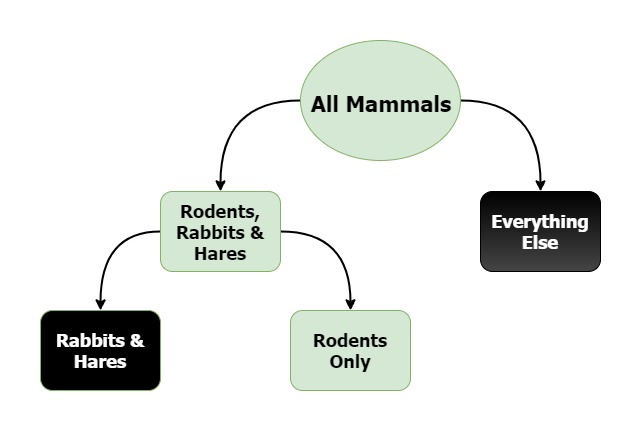
Anyway, back to the rodent story – rodents and the rabbit family split up a long time ago – so although rabbits have similar teeth and appearance to most rodents – they are very different genetically.
After the rabbits and hares left them to head on their way to looking more like rabbits and hares and less like mice, the rodents split up into smaller groups – the first off was the Hystricomorpha (which includes guinea pigs, porcupines and capybara). These are mainly all found in South and North America now and it is their mainstay – although some are in Africa too.
Another group then split offand started to form the Sciuromorpha (which includes squirrels and chipmunks). Half of these little beauties started to specialise in living in and around trees – and any trip to the woods will show you how successful they have become; and the others all went underground!.
Finally, a third group split off which we now call the Castorimorphs (which includes the wonderful dam-building beavers).
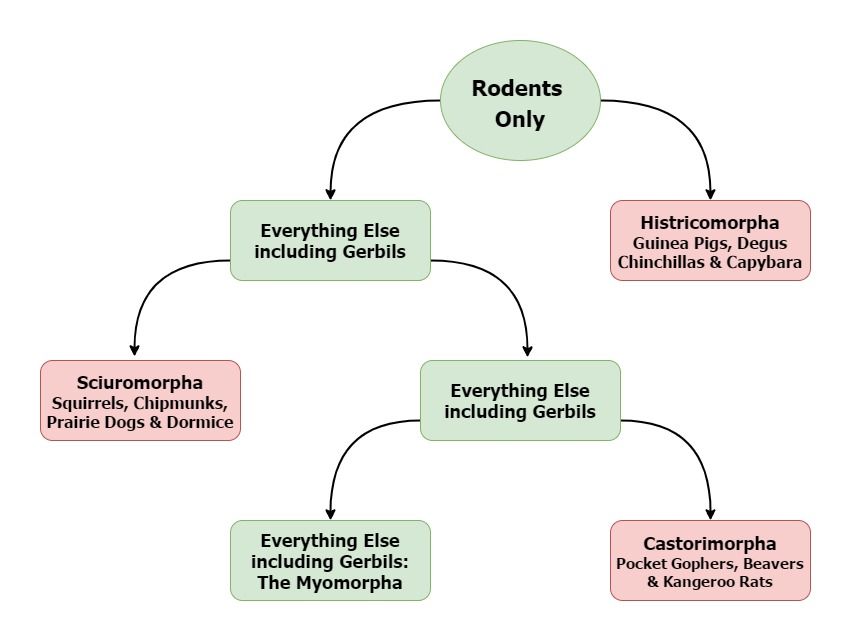
Everything else left was grouped within a huge suborder called: Myomorpha – mouse-like things! This group is so diverse that it accounts for nearly a quarter of all mammal species on Earth – including our little gerbabies.
Anyway, this group splits into small groups – trying to make sense of how all these small mammals are related to each other. The one we are concerned with is the Muroidea – the group containing gerbils (as well as true mice, true rats, hamsters, lemmings and voles).
We lose the hamsters at this point as they belong to the Cricetidae – and this name will explain why so many hamster cage trade names use the word ‘cricetti’ in them.
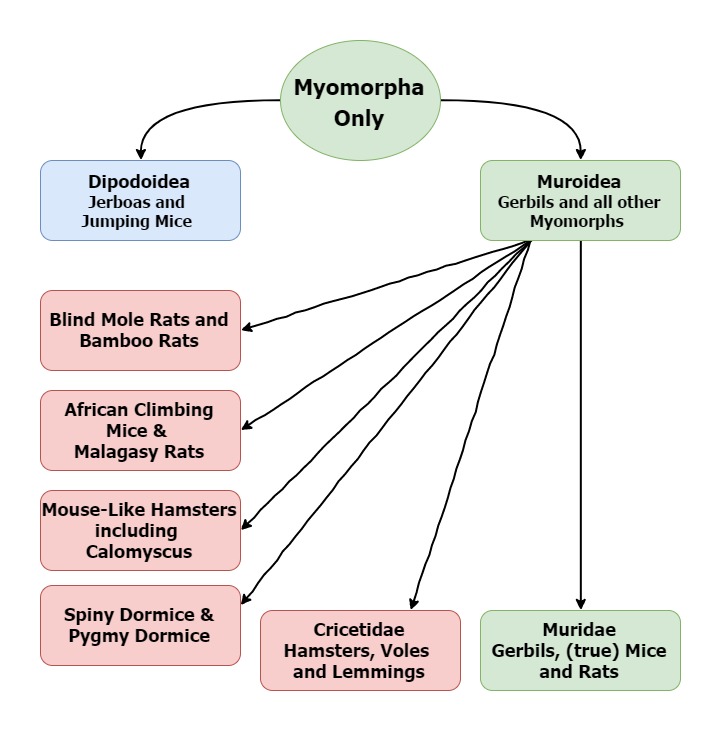
Within this group, not only did we leave the ancestors of the hamsters behind – but ALSO the jerboas – they are a whole different thing genetically.
They went off elsewhere in their evolutionary journey while the gerbils headed into their own group Muridae (mur-id-ay-ee) for things that are ‘like mice’ (the mur or myo part of these names) – however gerbils aren’t exactly like mice – so they get their own group now called (and very impressively) Gerbillinae – the home of the true gerbils.
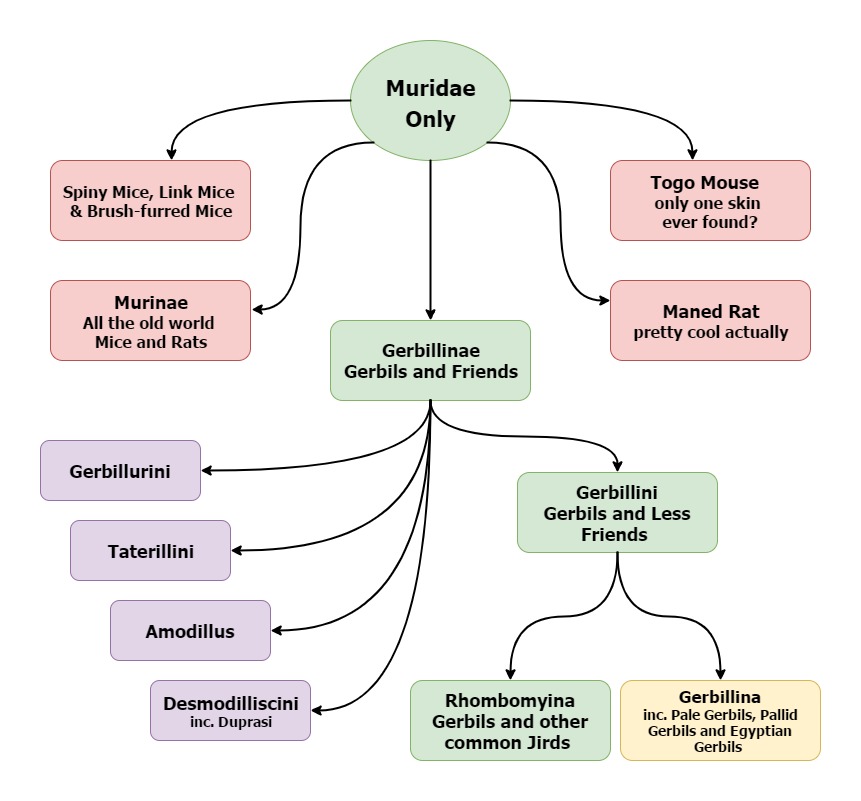
There are tons of them though – these Gerbillini are all over the place – filling a huge amount of niches in a huge amount of countries. Wherever it is warm and there is dry ground and sparse vegetation – you will find gerbils and their kin.
Any-hoo – they are all split up into the little ‘tribes’ and you have to wade quite far in to get to our little ones – Meriones. (If you are interested it is shown below in the last flowchart – and it is currently listed on Wikipedea as: (sub tribe) Rhombomyina – (genus) Meriones – (sub genus) Pallasiomys – (species) unguiculatus.
Meriones unguiculatus = the Mongolian Jird/Clawed Jird/Mongolian Gerbil/Pumpkin.
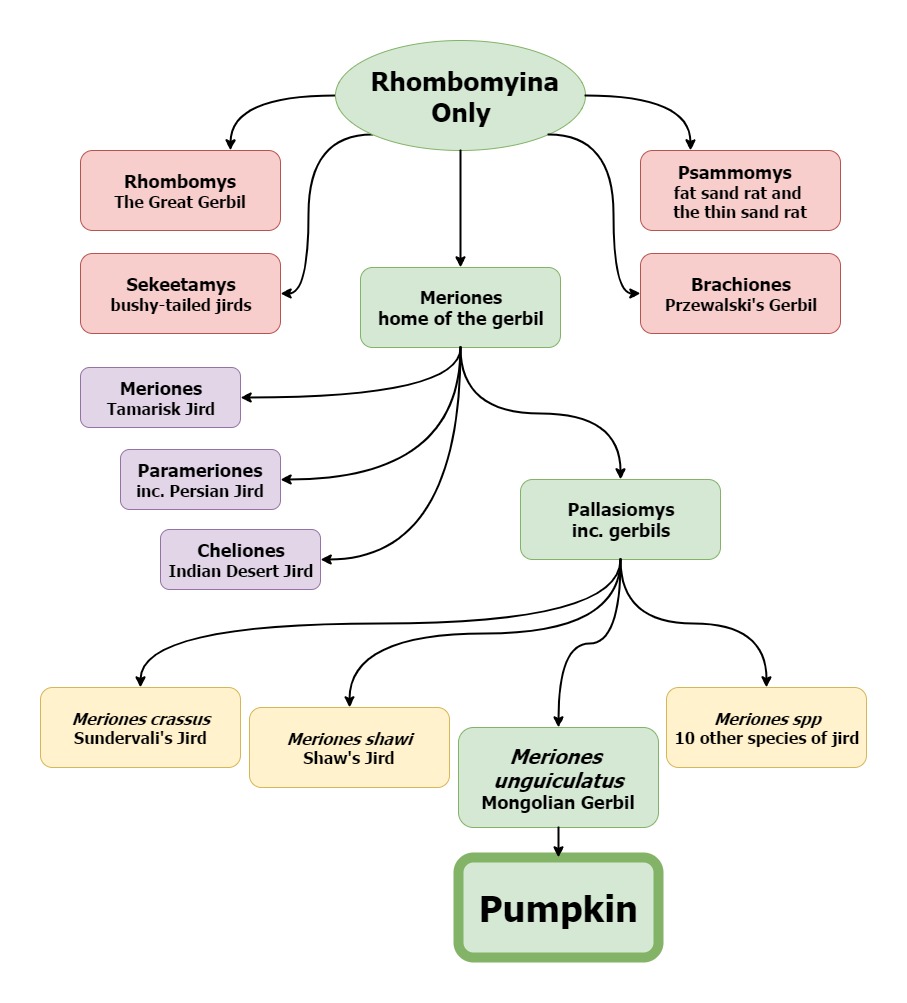
All data for this article was taken from Wikipedia in May 2017. There is no way I can find out these things myself without a DNA sequencing lab, a team of scientists, hundreds of different mammals from all over the world and a battery of scientific equipment and chemicals.
Lets just agree that there are already experts doing this for us in labs around the world and that the people typing it up online copied it down right…